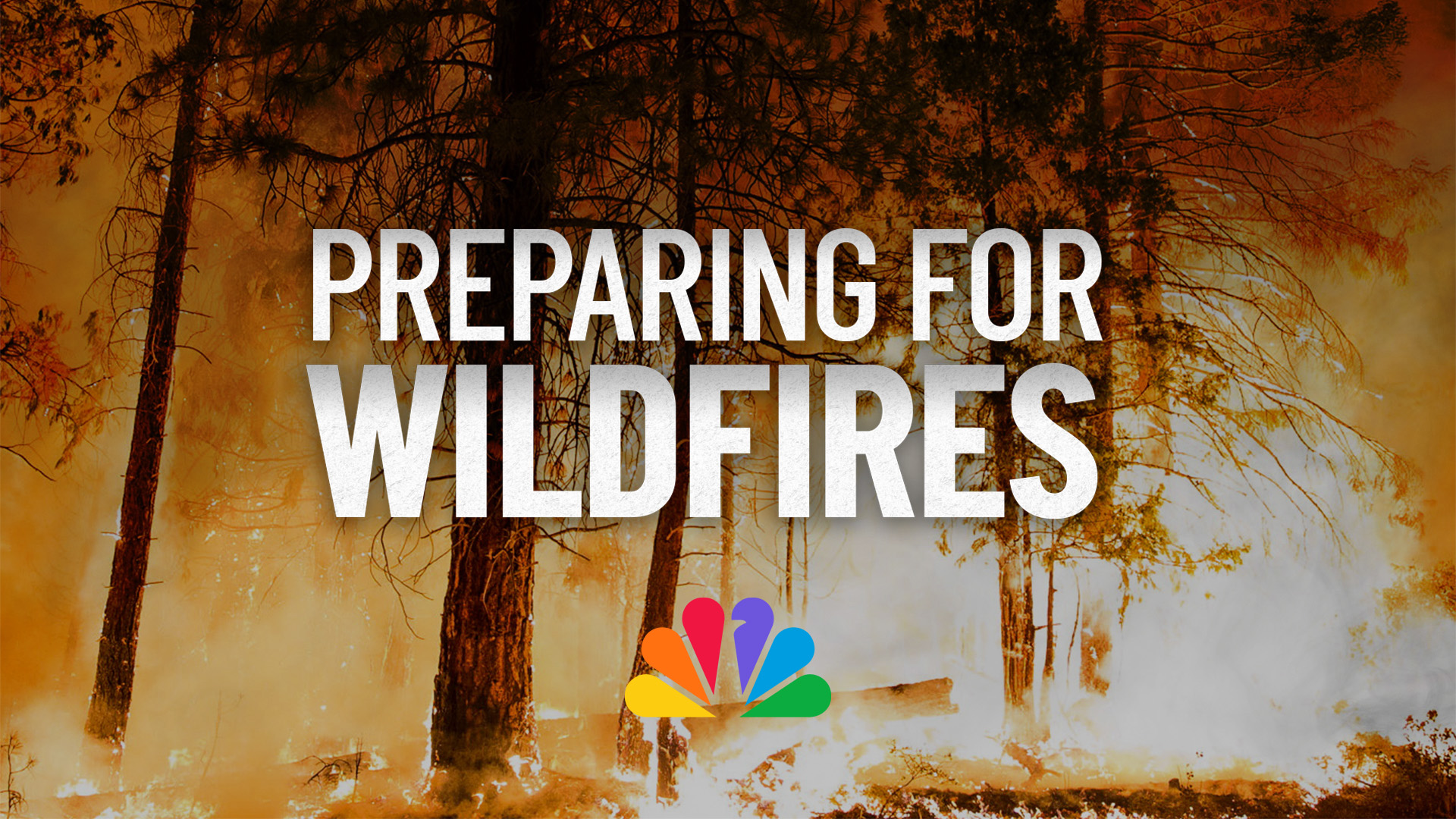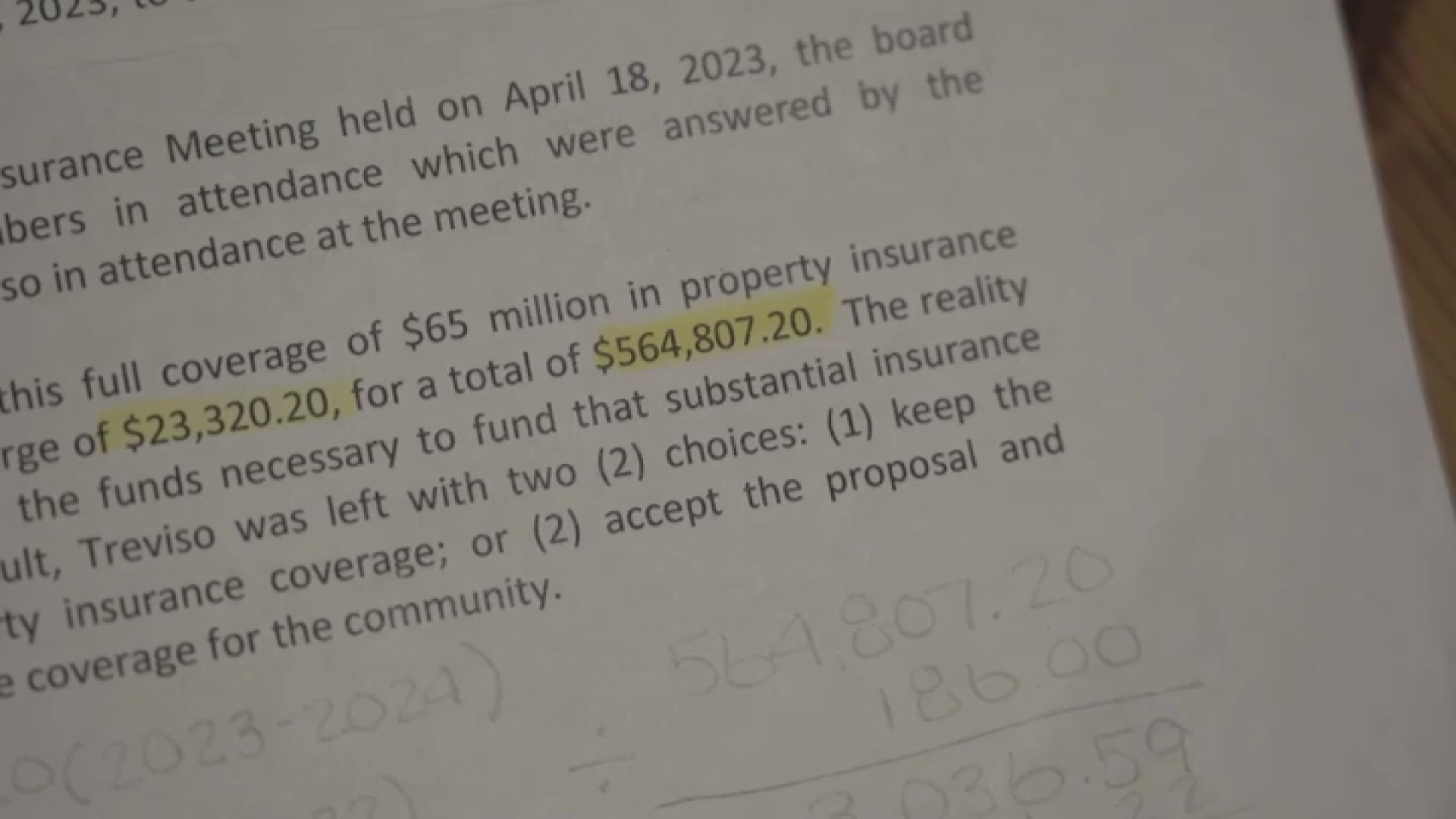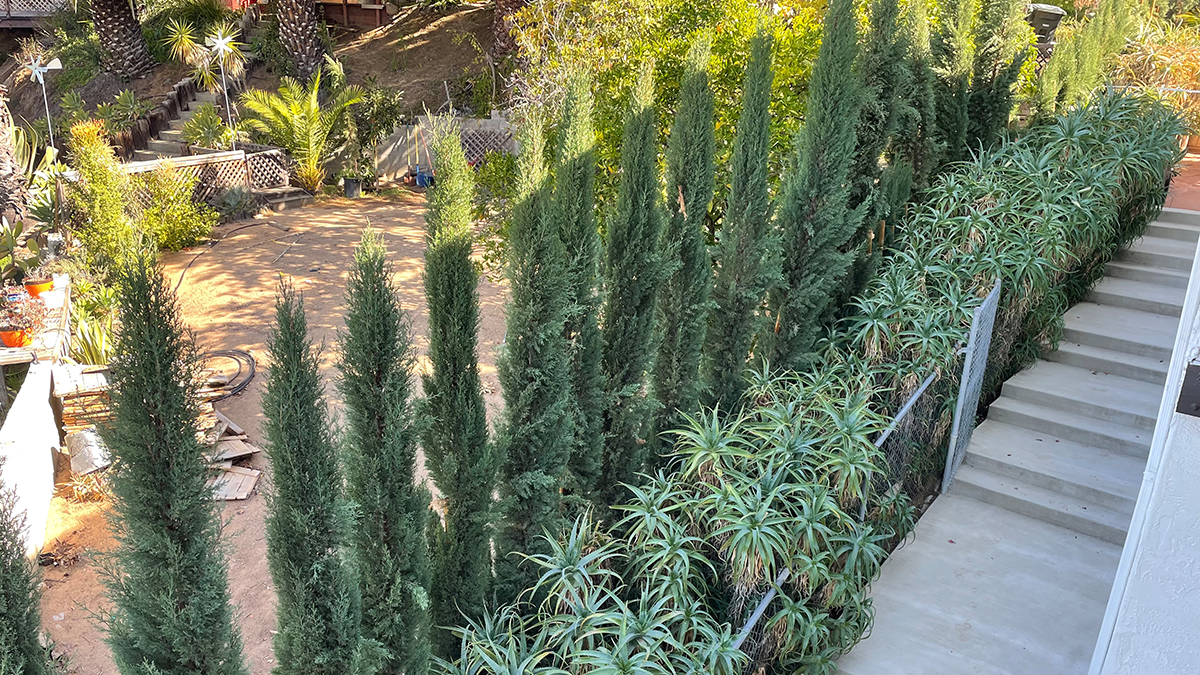From his backyard, Amado Nera can see the beautiful Los Peñasquitos Canyon Preserve. It encompasses thousands of acres of sensitive nature habitat with hundreds of unique plant and animal species, many of which are classified as endangered or threatened. In May of 2021, Nera also saw that preserve, with its dry vegetation, as a wildfire threat. It was one based on his experience.
“When we had a fire here, we were evacuated,” Nera said.
His son-in-law, John Strong, agreed with Nera’s concerns.
“It all comes right up to the line here. It’s all combustible material,” Strong said. “You can see how dense this area is.”
Get San Diego local news, weather forecasts, sports and lifestyle stories to your inbox. Sign up for NBC San Diego newsletters.
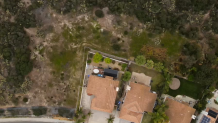
In an effort to create defensible space, as well as prevent the possible future loss of his homeowner’s insurance, Nera told us he took it upon himself to clear away brush around his home. Using a couple of ladders, Nera said he climbed over the chain-link fence into the preserve and went to work, clear-cutting bushes over the course of five days. “I did this of my own volition,” Nera said. “Thinking that it was good for the house and good for the city.”
Nera told us he thought the land belonged to SDG&E and didn’t know it was a nature preserve. There is a gated access point to the preserve less than 200 feet from the family’s home. In addition to an arm that blocks vehicular traffic, there’s also posted signage that identifies the land as a biological preserve, telling the public to stay out. NBC 7 Investigates determined through public records requests that signage was there before the preserve was damaged.
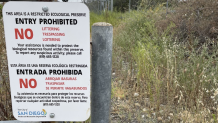
Not long afterward, the City of San Diego documents reveal that a Parks & Recreation Department environmental biologist stumbled upon the damage and spoke to Nera, who admitted he was the person responsible for the landscaping. Within days, the family received a letter from the city, ordering them to stop cutting. It also hinted at possible fines and penalties. In a statement to NBC 7 Investigates, a city spokesperson told us that more than 14,000 square feet of preserve was cleared by the homeowner.
City of San Diego fines family $53,367 for clearing brush in nature preserve behind home
More than a year and a half later, in October of 2022, the family received another letter from the city detailing the damage to the preserve and fining them $53,367.70.
“This is not a trivial amount,” Strong told us. “It’s a substantial amount of money.”
“I told the guy who came around. I cannot pay that amount,” Nero said. “I told him I’m prepared to go to prison.”
NBC 7 Investigates asked the city what $53,367.70 pays for. Documents show the bulk of it is for three years of “habitat monitoring and passive vegetation restoration services” by a third-party private company. According to the contract between that company and the city, it involves experts watching native plants regrow and removing invasive ones. That would be conducted over the course of three years.
“It just feels inherently excessive,” Strong said.
Strong says his attempts to talk to the city about the bill have mostly failed.
“The only communication that I had was with the Treasurer’s Office, which had indicated the claim had already been closed and they were seeking payment in full and that if we didn’t have the means to pay in full they were prepared to litigate against us,” Strong said.
The family told us they aren’t sure how they will pay the bill. They say they attempted to file a homeowner’s insurance claim but were told this wasn’t a coverage loss.
“The fine is so great,” Nera said. “I cannot pay that. There’s no way. I cannot pay. We’re only living out of our monthly pension.”
As of right now, Strong says they don’t know what they’re going to do.
“Fire season is coming up, and somebody could find themselves in the same situation,” Strong said. “I just want to share with everybody that, you know, this is what can happen.”
Response from the City of San Diego
NBC 7 Investigates asked for an interview with the city several times to discuss this family’s situation or simply to explain the importance of sensitive habitats like the Los Peñasquitos Canyon Preserve – but the city said it wouldn’t make anyone available. Instead, the city provided us with a statement.
The area is considered Dedicated Open Space and is home to Nuttall’s scrub oak and chamise chaparral. It is part of the City’s Multiple Habitat Planning Area and is 100% conserved as part of the Los Peñasquitos Canyon Preserve. This land is managed as part of the preserve, and it also has a city responsible brush management zone along the homeowner's property line.
The current Brush Management Program occurs on a 21-to-23-month rotation throughout the City of San Diego Open Space. Per municipal code 142.0413 and the San Diego Fire-Rescue Department's Canyon Fire Safety guidelines, brush thinning occurs within 100’ of a habitable structure and at 50% in zone 2. The prioritization of removal in zone 2 is dead wood, non-native vegetation, and if 50% reduction is not achieved, selective pruning of other vegetation. In this instance, per onsite photos, GPS, and Geographic Information Systems (GIS) mapping, over 14,000 square feet was cleared by the homeowner.
The Vernal Pool Habitat Conservation Plan (VPHCP) is a supplemental management plan that went into effect in 2017, the VPHCP supports the Multiple Species Conservation Program, City of San Diego Sub-Area Plan enacted in 1997. Through the VPHCP and MSCP implementing agreement and the VPHCP monitoring and management plan the city is obligated by the Federal and State wildlife regulatory agencies to conduct monitoring and management activities within the MHPA and other city owned lands to support the restoration and recovery of the listed species. Detailed information and maps for both the MSCP, and VPHCP can be found on the City of San Diego’s Planning Departments Biodiverse SD website.
The Risk Management Department coordinates the recovery of monies from responsible third parties or their insurers, for damages caused to City property as well as injuries to City personnel. This process allows the City of San Diego three years to seek damages as well as negotiate with the third party to reduce or establish long term payment plans.
The costs associated with the illegal and unpermitted vegetation cutting and damage of the vernal pool include the following:
- Habitat Monitoring and Passive Restoration Services by Helix Environmental Planning: $47,850.00
- City staff labor costs: $4,497.86
- Brush Removal by Alpha Project: $1,019.84
Brush Management that the City engages in is part of a statewide approved program to mitigate wildfire risk and all brush management activity is done with strict adherence to these program policies. Native vegetation communities are much more fire resistant than disturbed habitat dominated by non-native/invasive species.
These urban preserves that protect sensitive habitat and species represent the last remnants of native habitats in southern California. Over 99% of vernal pool habitat has been systematically eliminated by development, habitat loss, and invasive species.
Some species that are protected by these programs and our network of preserves exist only in San Diego County and are under constant threat. The City of San Diego is a leader in the establishment of urban preserves and was the first major city to adopt these types of habitat protections. The City of San Diego manages the largest urban (City-owned) preserve in the lower 48 states.
How the City of San Diego says it reduces wildfire risks
The city also pointed us to information about the steps its Brush Management program takes to reduce the threat of wildfires. That includes thinning out brush with 100-feet of habitable structures every two years. It posts a schedule online that shows when that work is performed at each of the city’s 11 open space areas.
The city also told us that native plants, like the ones in the preserve, are much more fire resistant than non-native species.
If a homeowner believes brush management needs to happen more often, they can reach out to the city for help, or even apply for a special permit to do the work themselves or with a contractor.

